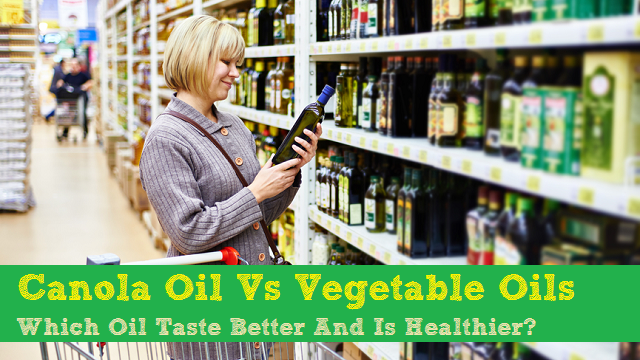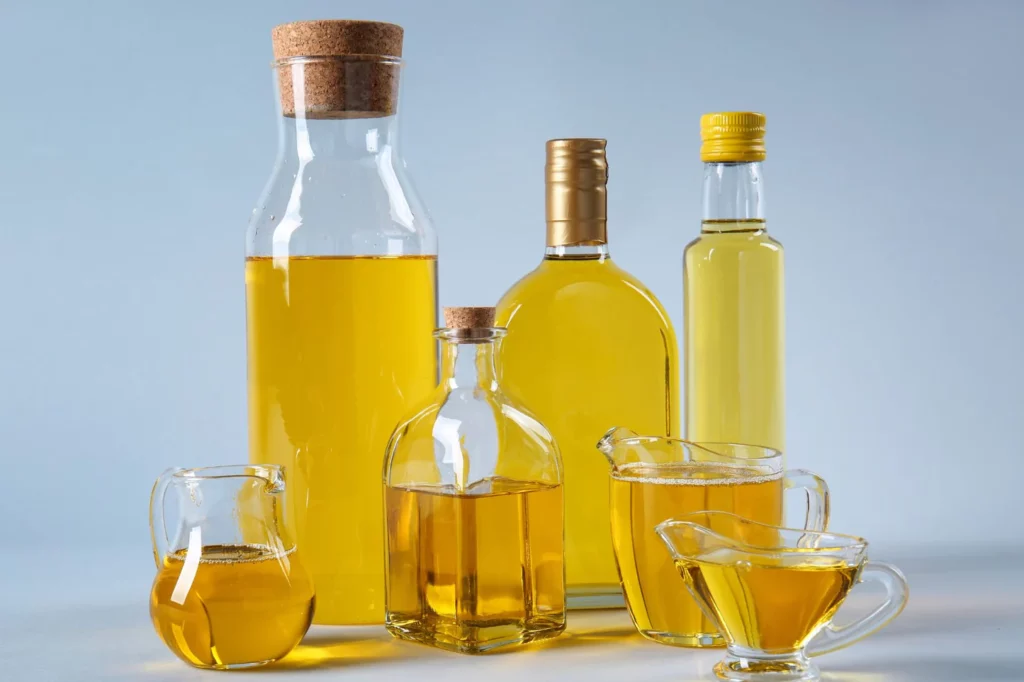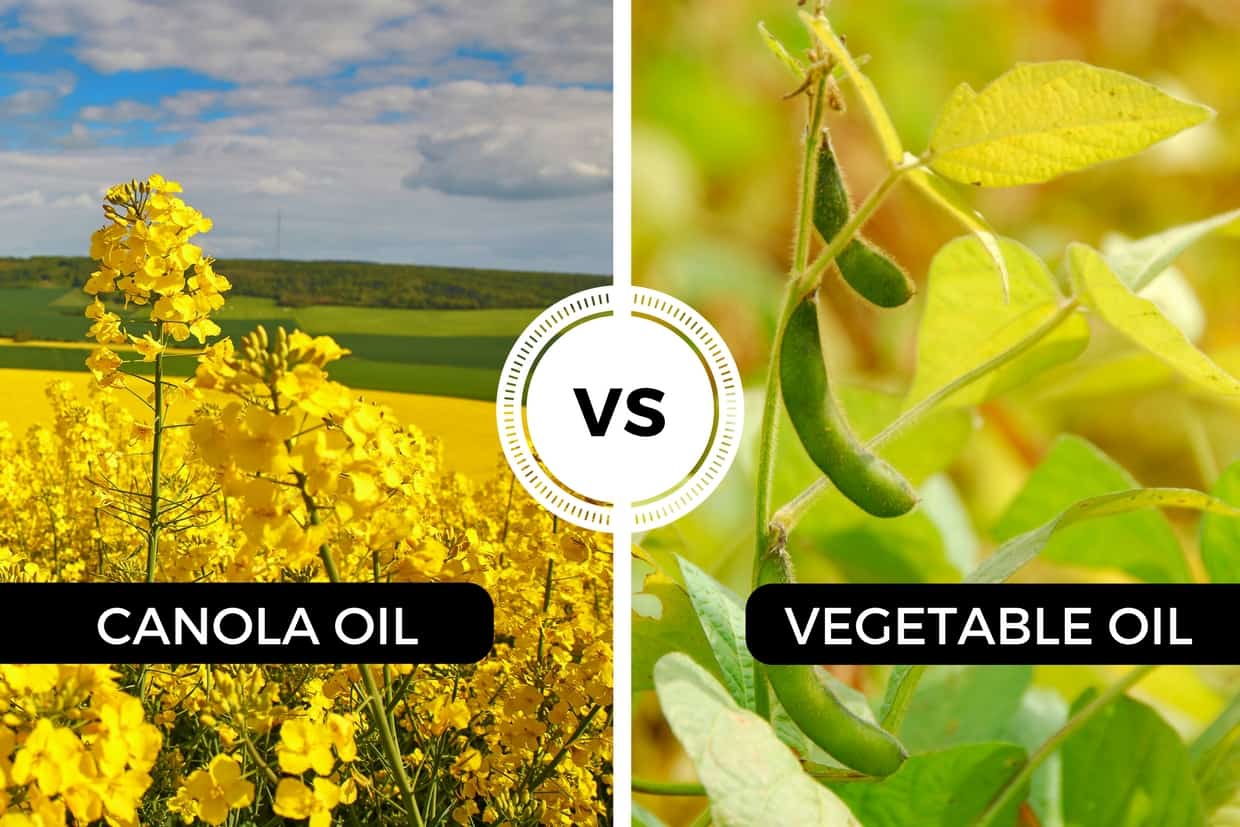Canola Vs Vegetable Oil: Which Is Healthier
The battle rages on and it would seem that everyone is right. So, which oil is best for your needs? Canola or vegetable oil? Maybe a clear look at the facts will help you decide which oil to use for your situation.
Let’s look at each oil.
Canola oil is made from crushed seeds of the canola plant, or rape plant. By heating the seeds and then crushing them, the oil can be harvested. Rich in alpha-linolenic acid, a type of omega-3 fatty acid as well as low in saturated fatty acids, canola oil is also considered good for the heart as well as for people with high glucose problem.
Vegetable oil is made from the seeds of plants such as corn, soybean or sunflower. By extracting the triglycerides from these plants, an oil can be produced. This oil replaced animal fats and was thought to be much healthier than lard for cooking.
The uses for each oil vary according to taste and cooking methods. For instance, canola oil is commonly used for salad dressings because of its light flavor. Soybean oil has a higher smoke point (the temperature where it starts smoking) than canola oil. This makes it perfect for deep-frying and sautéing foods. Peanut oil has one of the highest smoke points, making it perfect for frying. It is the usual choice when using turkey fryers. Since vegetable oil is actually a blend of oils, such as palm and sunflower, the smoke point and flavor will depend on the amount of the blends.

The flavor of certain foods will also help you to determine which oil to use. For light and delicate flavors, such as fish, canola oil is great. It has a taste that won’t overwhelm the taste of the fish. It is great for deep-frying fish, too, due to its high smoke point. Vegetable oil is perfect for pan frying fish. A handy tip to remember is that American dishes with seafood usually use vegetable oil.
But these oils aren’t just used in cooking. Canola oil is also used to make mayonnaise, salad dressings and, when processed, in ethanol and ink and even lubricants. Soaps, cosmetics and plastics as well as paint can all be made from processed canola oil.
Vegetable oil is used for shortening, salad dressings and margarines. However, industrially, it can be used for detergents, coatings, water repellents and corrosion inhibitors. There are also several household uses for vegetable oil, such as to shine shoes and to get peanut butter and gum out of hair.
Both oils have many uses and both have their own place in the cooking industry. However, taste is probably the most important component of each oil. How do they taste? Well, that depends on what you are cooking. If you are making brownies, or some cinnamon sticky buns, you could use either canola or vegetable without tasting a difference in the products. Baking usually masks the flavor of each oil.
For delicate taste, like making homemade mayonnaise, the type of oil you use is critical. Vegetable oil like corn oil, will make the mayonnaise taste terrible. The strong flavor of the corn will come through and taint the taste of the mayonnaise. For this condiment, canola oil is the better choice for a lighter taste.
For deep-frying potatoes, the vegetable oil is the best choice. Vegetable oil enhances the flavor and provides a crispy crust on the potato. Canola oil used for deep-frying potatoes seems to leave a bad after-taste that some describe as fishy. This is due to the fatty acids breaking down in the high heat and producing a fishy taste.
Many people enjoy making their own vinaigrettes and marinades. For these items, both oils can be successfully used. This is because the vinegar and spices will overwhelm any taste the oils may leave behind.
There are instances where neither of these oils will work in a recipe. For instance, making homemade flavored oils. These oils require the light taste of oils like olive oil or sunflower oils or even nutty oils, like walnut. The seemingly light flavors of both the vegetable and the canola oils will shine through on these flavored oils, and not in a good way.

So, which oil tastes better? It completely depends on what you are making, and on personal preference.
Now, which oil is better for your health and your heart? Canola oil is a clear winner when it comes to health benefits. Canola oil is lower in saturated fats than vegetable oil. Canola oil has about half of the saturated fat of vegetable oil. It is also high in polyunsaturated fats and monounsaturated fats.
Omega-3 and omega-6 fatty acids have been found to be beneficial for arthritis, depression and to reduce the risks of heart disease. These fatty acids are found abundantly in canola oil. Although they are present in vegetable, they are highly refined and lose a lot of their health benefits.
It is important to remember that, even though canola oil is heart-friendly, both of these types of oils should be used sparingly. Each one contains about 120 calories a teaspoon and can still increase cholesterol levels in the bloodstream.
A good recommendation is to rotate between different kinds of oil for different types of recipes and meals. So try out the different oils. Test the recipes before you serve them. Enjoy your oils.
Other Articles:
Exploring Perth: A Local’s Guide to Gift Baskets with a Twist
How To Conceive A Baby Girl Naturally: 10 Tips

